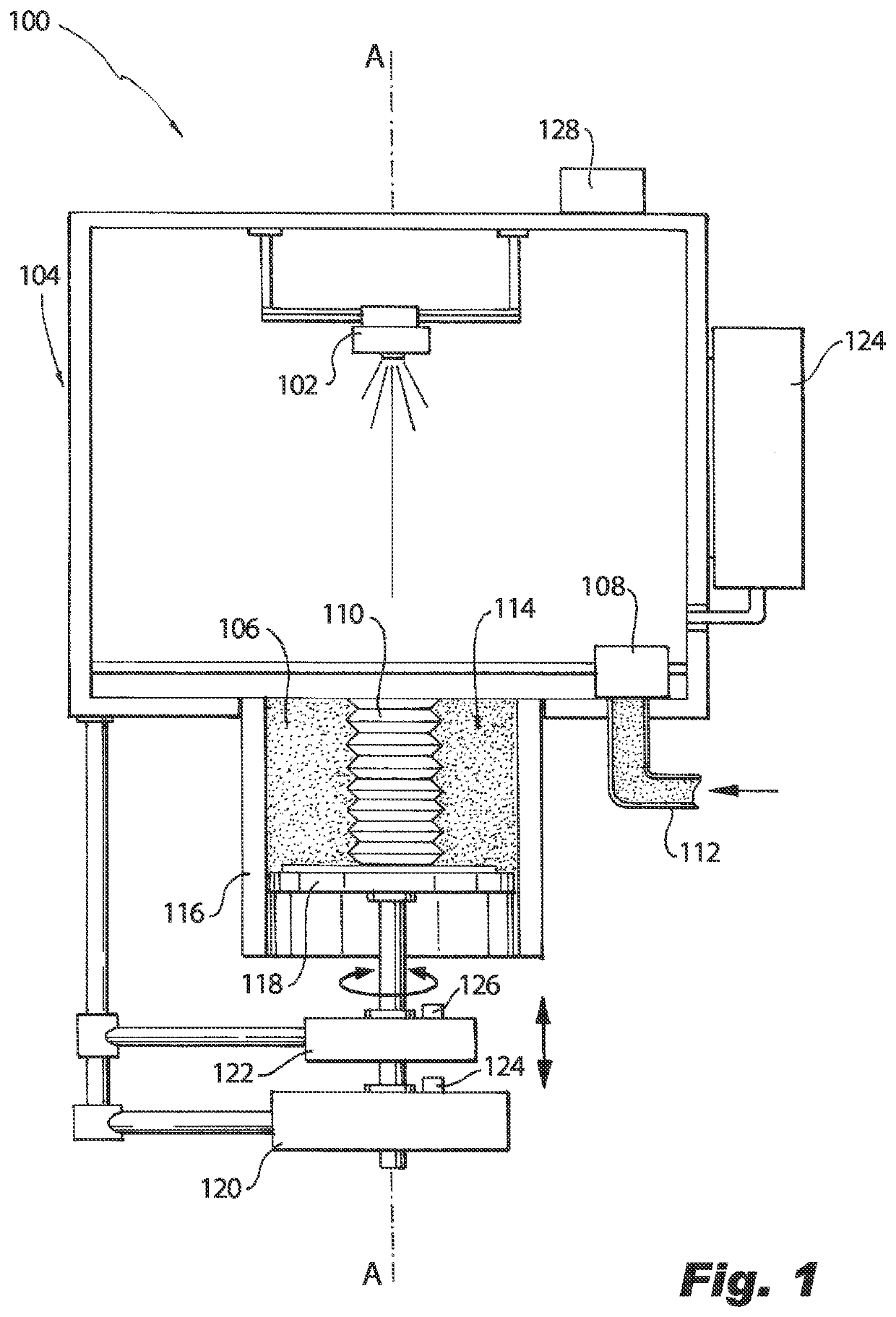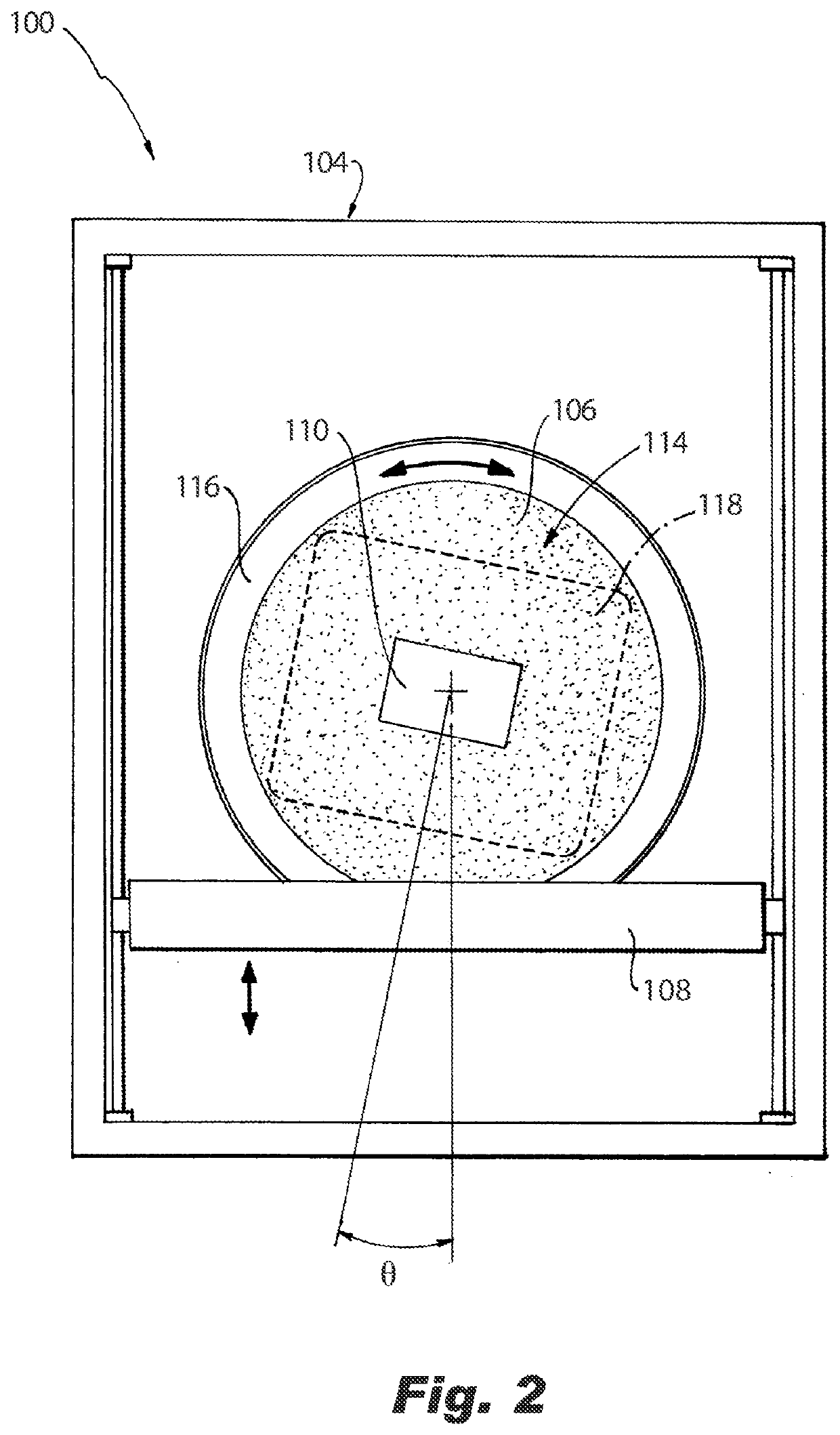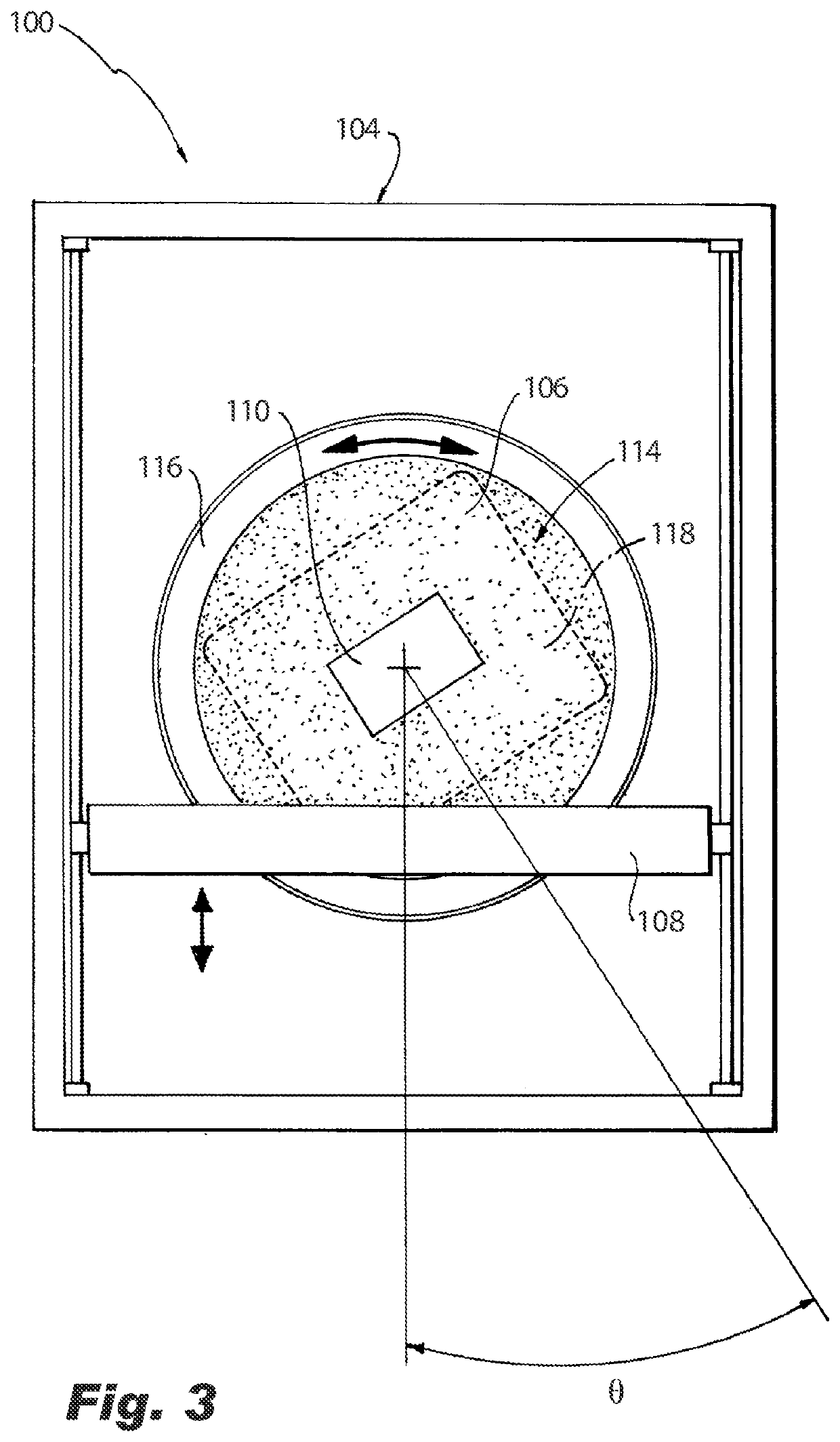Rotating relative recoater and part orientation
a relative recoater and rotational technology, applied in the field of control of geometries, can solve the problems of limiting design space and negatively affecting the build quality of parts, and achieve the effect of reducing or eliminating cumulative build errors, reducing or eliminating ripples
- Summary
- Abstract
- Description
- Claims
- Application Information
AI Technical Summary
Benefits of technology
Problems solved by technology
Method used
Image
Examples
Embodiment Construction
[0019]Reference will now be made to the drawings wherein like reference numerals identify similar structural features or aspects of the subject disclosure. For purposes of explanation and illustration, and not limitation, a partial view of an exemplary embodiment of a system for additive manufacturing in accordance with the disclosure is shown in FIG. 1 and is designated generally by reference character 100. Other embodiments of systems in accordance with the disclosure, or aspects thereof, are provided in FIGS. 2-3, as will be described. The systems and methods described herein can be used to control build quality and reduce cumulative build errors in additive manufacturing.
[0020]The system 100 includes an energy source 102, e.g., a laser, electron beam, or any other suitable directed source of sintering energy, mounted for movement, e.g., linear or curved movement, relative to a machine body 104, e.g., two-dimensional movement left and right and into and out of the viewing plane a...
PUM
| Property | Measurement | Unit |
|---|---|---|
| angle | aaaaa | aaaaa |
| composition | aaaaa | aaaaa |
| approach angle | aaaaa | aaaaa |
Abstract
Description
Claims
Application Information
 Login to View More
Login to View More - R&D
- Intellectual Property
- Life Sciences
- Materials
- Tech Scout
- Unparalleled Data Quality
- Higher Quality Content
- 60% Fewer Hallucinations
Browse by: Latest US Patents, China's latest patents, Technical Efficacy Thesaurus, Application Domain, Technology Topic, Popular Technical Reports.
© 2025 PatSnap. All rights reserved.Legal|Privacy policy|Modern Slavery Act Transparency Statement|Sitemap|About US| Contact US: help@patsnap.com



